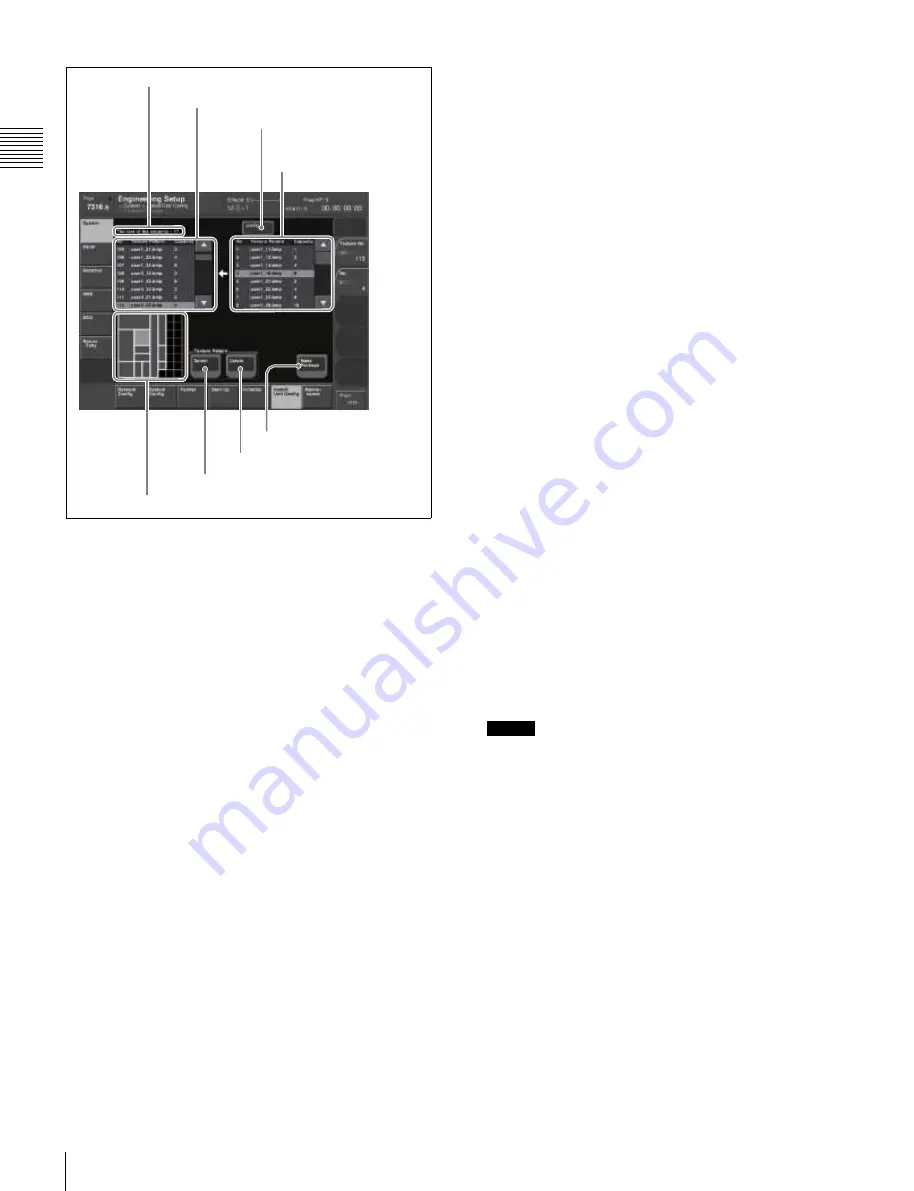
USO
RESTRITO
320
Installation and Device Setup
Ch
a
p
te
r 17
S
y
s
te
m
S
e
tu
p
1
The rest of the capacity
2
Texture number list
3
Directory selection button
4
Texture file list
8
Make Package button
7
Delete button
6
Select button
5
Grid display of memory capacity
a
The rest of the capacity (available memory space)
This shows an available memory space in units of 128 ×
128 pixels (a maximum of 64 units of memory space is
available).
b
Texture number list
This shows the texture numbers (101 to 164) registered in
the texture package.
The list Capacity shows the file size in units of 128 × 128
pixels (a total maximum of 64 units of texture files can be
registered).
c
Directory selection button
By pressing this button to display the popup window, you
can select a directory on a removable disk.
d
Texture file list
This shows the texture files stored on a removable disk.
If a texture file is stored in a directory, press the directory
selection button and select the directory in the popup
window, to show a list of files.
The list Capacity shows the file size in units of 128 × 128
pixels.
e
Grid display of memory capacity
This shows a grid display of how the texture files are
stored in memory.
An 8 × 8 grid of 64 squares, where each square represents
128 × 128 pixels.
It shows the location where the texture files are stored in
memory by bold frames. The grid for the texture file
selected in the texture number list is shown in amber.
f
Select button
Pressing this button assigns the texture file selected in the
texture file list to the number selected in the texture
number list.
g
Delete button
Pressing this button deletes the texture file assigned to the
number in the texture number list.
h
Make Package button
Pressing this button creates the texture package.
Creating a texture package
To use a user-provided texture pattern with the
spotlighting function, it is necessary to convert the texture
files to vector files for bump mapping. This operation is
referred to as “creating a texture package.”
1
Insert the removable disk containing the texture file to
the DEVICE connector on the control panel or menu
panel.
2
Open the Engineering Setup >System >Install/Unit
Config menu (7316).
3
Select a DME for which the spotlighting license is
valid.
4
Press [Texture Package].
The Texture Package menu (7316.9) opens.
Notes
If you select a device for which the spotlighting license
is not enabled, then [Texture Package] is not enabled.
5
In the texture number list, select the number for which
you want to register the texture package.
6
Select a texture file in the texture file list.
7
In the <Texture Pattern> group, press [Select].
This assigns the texture file selected in step
6
to the
number selected in step
5
, and updates the texture
number list.
The grid display of memory capacity shows the
location where the texture files are stored in memory
by bold frames. The grid portion for the texture file
selected in the texture number list is shown in amber.
8
Repeat steps
5
to
7
, to assign all of the texture files to
texture packages.






























